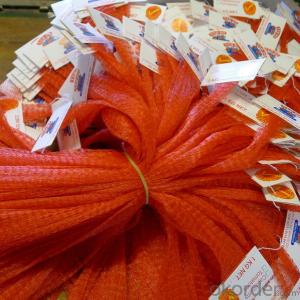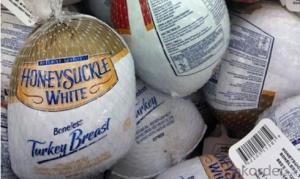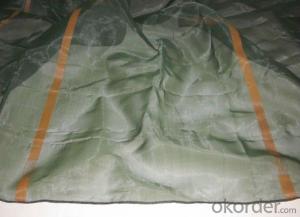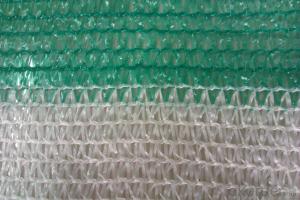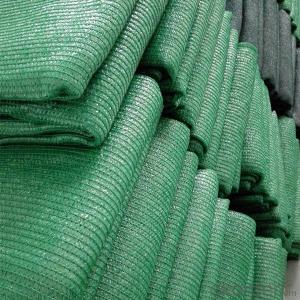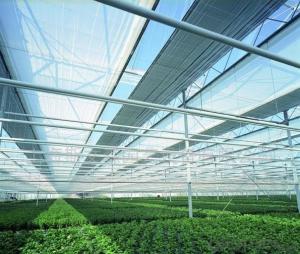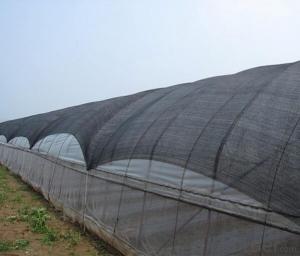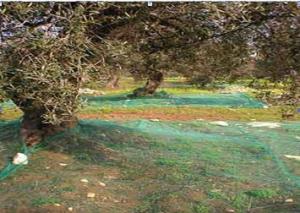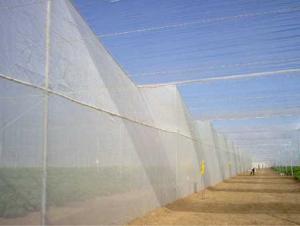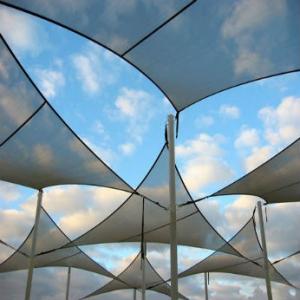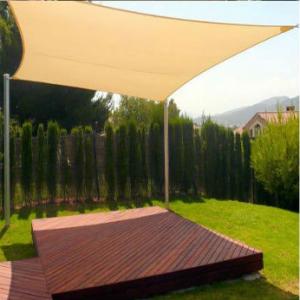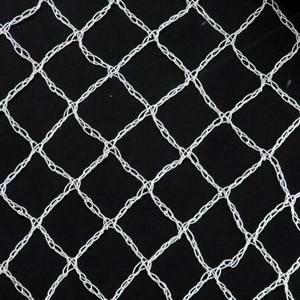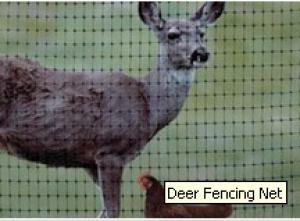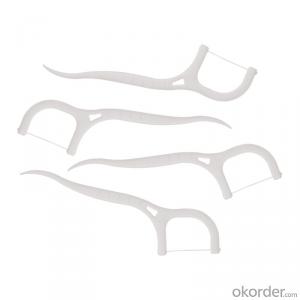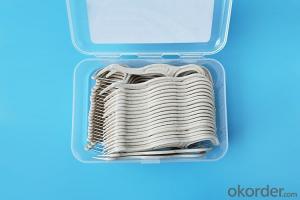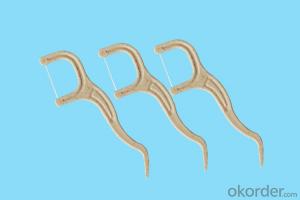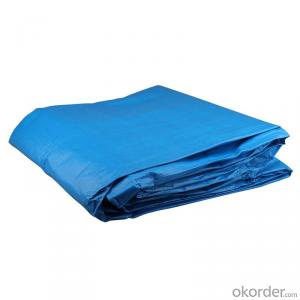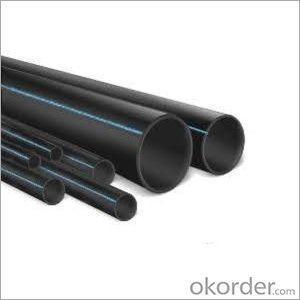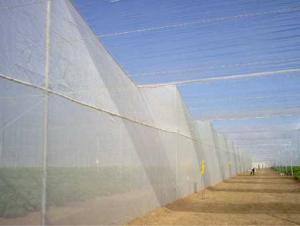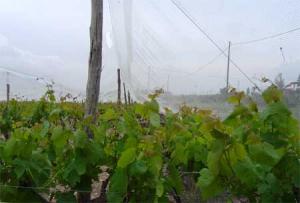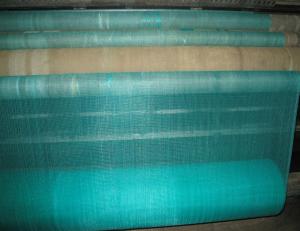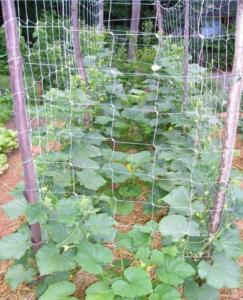Mesh bag extruded for fruit soft
- Loading Port:
- Shanghai
- Payment Terms:
- TT OR LC
- Min Order Qty:
- -
- Supply Capability:
- 200T m.t/month
OKorder Service Pledge
Quality Product, Order Online Tracking, Timely Delivery
OKorder Financial Service
Credit Rating, Credit Services, Credit Purchasing
You Might Also Like
Product Description
We can produce a variety of mesh bag with high quality, including mesh bag (PP), raschel mesh bag (PE) and tubular mesh bag (PP).
Item: Leno mesh bag with label
Material: PP
Size: As customers' requirements
Color: Red, orange, yellow, green, purple, transparent etc.
They are widely used for packing vegetables, fruits, firewood and seafood. Such as onions, potato, garlic, orange, cabbage, carrot, apple, pear and so on.
- Q:Do plastic nets come with anti-bacterial properties?
- No, plastic nets typically do not come with anti-bacterial properties.
- Q:Are plastic nets suitable for construction purposes?
- Yes, plastic nets are suitable for construction purposes. They are often used as reinforcement for concrete structures, providing additional strength and stability. Plastic nets are lightweight, durable, and resistant to corrosion, making them ideal for various construction applications such as road pavements, retaining walls, and precast concrete elements.
- Q:Can plastic nets be used for packaging stationery?
- Yes, plastic nets can be used for packaging stationery. They provide a protective barrier and allow for easy visibility of the items inside. However, alternatives like paper or biodegradable materials may be more environmentally friendly options to consider.
- Q:How do plastic nets differ from other types of nets?
- Plastic nets differ from other types of nets primarily in their material composition. While traditional nets are typically made of natural fibers like cotton or nylon, plastic nets are made from synthetic materials such as polyethylene or polypropylene. This difference in material provides plastic nets with distinct advantages such as increased durability, resistance to weather conditions, and enhanced protection against rotting or corrosion. Plastic nets are also more lightweight and cost-effective compared to traditional nets, making them popular in various industries including agriculture, fishing, and construction.
- Q:Are plastic nets suitable for bee hive frames?
- No, plastic nets are not suitable for bee hive frames. Bee hives require proper ventilation, and plastic nets can restrict airflow. Additionally, bees may chew through or damage the plastic nets, compromising the structural integrity of the hive. It is recommended to use materials specifically designed for beekeeping, such as wooden frames with wire or wax foundation.
- Q:Can plastic nets be used for hydroponics?
- Yes, plastic nets can be used for hydroponics. They are commonly used in hydroponic systems to support the plants and provide a structure for them to grow on. Plastic nets are lightweight, durable, and allow good air circulation and nutrient flow, making them suitable for hydroponic applications.
- Q:Are plastic nets commonly used in the medical field?
- No, plastic nets are not commonly used in the medical field.
- Q:Can plastic nets be used for anti-bird netting in agricultural fields?
- Yes, plastic nets can be used for anti-bird netting in agricultural fields. These nets are durable, lightweight, and can effectively prevent birds from damaging crops by acting as a physical barrier. They are widely used in agriculture to protect fruits, vegetables, and other crops from bird infestation, reducing the risk of yield loss and increasing crop yield.
- Q:Can plastic nets be used for beekeeping?
- Yes, plastic nets can be used for beekeeping. They can serve as protective barriers to keep bees contained within designated areas or to prevent other animals from accessing the hives. Additionally, plastic nets can be used as screens to regulate ventilation in beehives and protect bees from extreme weather conditions.
- Q:How do plastic nets contribute to environmental pollution?
- Plastic nets contribute to environmental pollution primarily through their non-biodegradable nature and potential for entanglement. When plastic nets are discarded or lost in the environment, they can persist for hundreds of years, releasing microplastics and posing a threat to various organisms. Additionally, these nets can entangle marine life, leading to injury or death. Their accumulation in water bodies and ecosystems further exacerbates pollution and disrupts the natural balance of ecosystems.
1. Manufacturer Overview |
|
|---|---|
| Location | |
| Year Established | |
| Annual Output Value | |
| Main Markets | |
| Company Certifications | |
2. Manufacturer Certificates |
|
|---|---|
| a) Certification Name | |
| Range | |
| Reference | |
| Validity Period | |
3. Manufacturer Capability |
|
|---|---|
| a)Trade Capacity | |
| Nearest Port | |
| Export Percentage | |
| No.of Employees in Trade Department | |
| Language Spoken: | |
| b)Factory Information | |
| Factory Size: | |
| No. of Production Lines | |
| Contract Manufacturing | |
| Product Price Range | |
Send your message to us
Mesh bag extruded for fruit soft
- Loading Port:
- Shanghai
- Payment Terms:
- TT OR LC
- Min Order Qty:
- -
- Supply Capability:
- 200T m.t/month
OKorder Service Pledge
Quality Product, Order Online Tracking, Timely Delivery
OKorder Financial Service
Credit Rating, Credit Services, Credit Purchasing
Similar products
New products
Hot products
Related keywords
